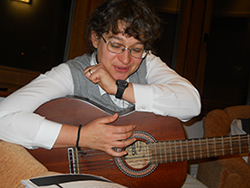La musica appartiene a ognuno: momenti di progresso nella Community Music Therapy
DOI:
https://doi.org/10.15845/voices.v16i3.853Parole chiave:
community music therapy, Hungary, severe disabilities, social inclusion, orchestraAbstract
L'articolo descrive i progetti innovativi e di successo che coinvolgono musicisti con disabilità gravi e adolescenti studenti di musica. Il Nádizumzuzum Orchestra è composta da membri adulti di una casa di cura. Essi sono in grado di riprodurre musica con un metodo di nuova concezione chiamato Consonate. I giovani musicisti sono studenti della Zoltán Kodály ungherese coro della scuola. L'articolo presenta il contesto storico e socio-politico del progetto, per illustrare come la musicoterapia cresce da particolari circostanze culturali e politiche in Ungheria, e pertanto assume una forma ungherese e un sapore particolarmente ungheresi. L'articolo riflette anche sul più ampio contesto della ricerca internazionale e pratica della Community Music Therapy.

Downloads
Pubblicato
Come citare
Fascicolo
Sezione
Licenza
Articles published prior to 2019 are subject to the following license, see: https://voices.no/index.php/voices/copyright

